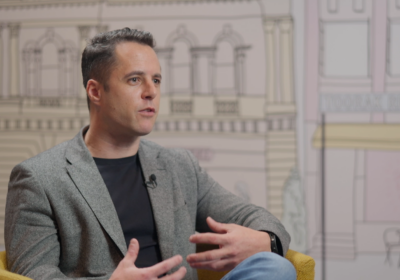In today’s polarized political climate, marketing is seeing a change in trust levels among consumers, says Maria Pousa. “There’s definitely a trust issue right now in society across the board,” said Pousa, CMO of Integral Ad Science, a technology company that analyzes ad placements.
The company was founded in 2009 with the goal of helping brands show up in the right environments. But while its bread and butter was brand safety, the founders soon realized “making sure that your ads were showing up in front of real human consumers”—issues of digital ad fraud—loomed larger, said Pousa.
Lately, brand safety is again a concern, after news stories surfaced of packaged-goods companies’ ads showing up on ISIS videos on YouTube and other questionable media placements. IAS has seen an uptick in concerns about brand safety over the last year, with requests for information on that area up 40%, said Pousa.
Velocitize spoke to Pousa about hackers, breaches and fake news.
Velocitize: Has the issue of brand safety has come back to the fore over the last year?
Maria Pousa: Last year, it’s become highly politicized. You’ve been talking about fake news and the impact fake news had in the election.
It’s a very sensitive sociopolitical environment right now around the world—in Europe with Brexit in the U.K. and here we’re seeing a society that is highly polarized. Now we’re seeing a lot of these issues that pertain to advertising are spilling over.
Does polarization matter that much now that we hear about purpose-based advertising and brands needing a point of view?
The consumers do have a voice; they make themselves heard. You have (groups like) Sleeping Giants on Twitter.
Whether they like it or not, the consumers are bringing the brands into the conversation. There’s a lot of activist brands nowadays—Airbnb, H&M, a lot of the retailers—who take a stand and make a decision they want to support different types of topics.
If you put one and one together, the way forward from a branding and marketing perspective is having that mix between marketing your product but also taking a stand, having a point of view on certain topics in society.
Since there’s so much data, is it becoming devalued?

The question is: do you have the right data sets? Do you understand what’s the data you should be looking at? The toughest questions are how we make the data actionable.
If you’re trying to do media mix modeling and trying to see what users are converting, and you include fraud in your data set, most likely your media mix is going to be skewed. Bots—all the malware—they click on ads, fill up forms, they register and log in, fill up surveys. They do all these things. The only thing they don’t do is buy. Bots don’t have credit cards.
The data question is tricky because it’s first: Do you have the right data available to you, are you modeling against the right data set? And then: What can you do with the data? There’s a lot. You can have the paradox of choice, like a Chinese restaurant menu, and you’re paralyzed.
At the end of the day, it’s a skill set issue within the teams in marketing. Teams are getting transformed around the skills sets that you need to have at the table. Who are the partners and what are the data sets? How can you bring those data sets into the modeling schemes? It has become increasingly complex.
Is real progress being made against ad fraud and transparency issues?
There’s definitely progress being made because marketers understand the issue way more and they understand that they’re investing money in digital and unfortunately a bunch of their budgets are going in the wrong hands and haven’t served the purposes they were meant to serve. There’s been an increasing awareness within the marketing community that this is an issue and that you need to prepare yourself to deal with the issue.
At the same time, we’ve seen your typical example of a guy sitting solo, working out of a basement—the typical stereotype of the hacker—has become increasingly complex for those individuals. Some of them are leaving and not really focusing anymore on this type of criminal activity.
What we’re seeing in the ones who remain doing this, it requires an upfront commitment, and a larger, much more organized operation. Is fraud going to go away? It’s a criminal activity and it’s a white-glove criminal activity. This is not like robbing a bank.
Can we expect that it’s fully going to go away? I’m not too sure. It’s the same expectation of thinking the robbing banks or robbing houses will also go away. It’s a criminal activity.
Is it realistic for marketers to assume responsibility for cleaning this up?
Marketers need to think about data security in ways we haven’t thought about before. They have to think about how to protect their brand and how they’re going to protect their consumers, as well. This is what we’ve been talking about for a while, the relationship between the CMO and CIO and how they had not been talking to each other.
Now we’re having conversations about how we integrate the systems: How do we make sure the technology you’re using fits within the ecosystem of the company? How do you port data? How do you talk about data security?
It’s a completely different world. For me, there are parallels with Gutenberg and the printing press. We’re in an era where everybody has access to technology. It has democratized access, so it comes with a lot changes.
It would be interesting to fast forward 10 years down the road and reflect back on what’s happening right now.





Join the conversation